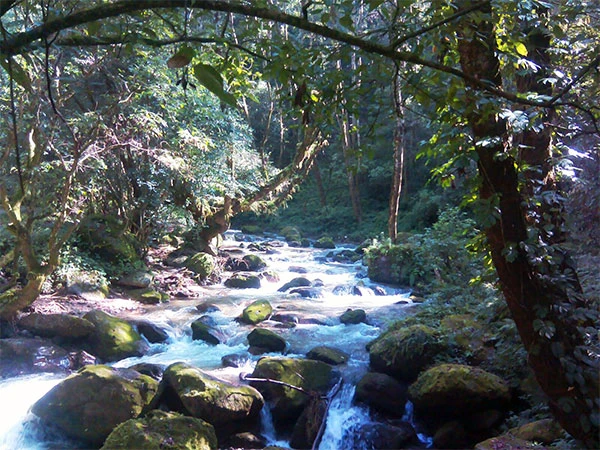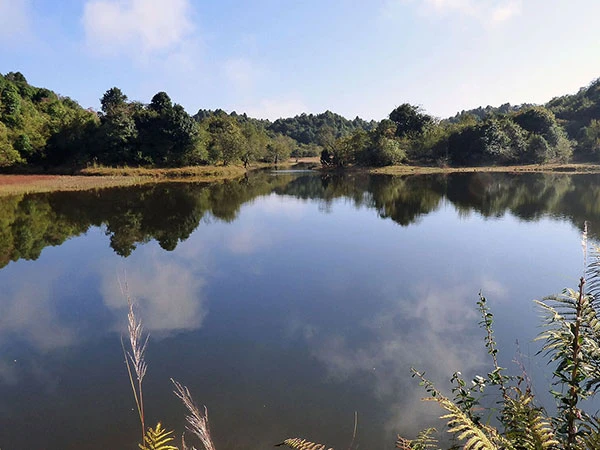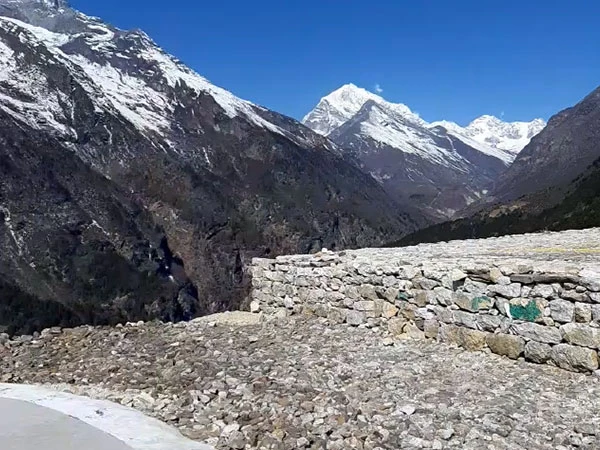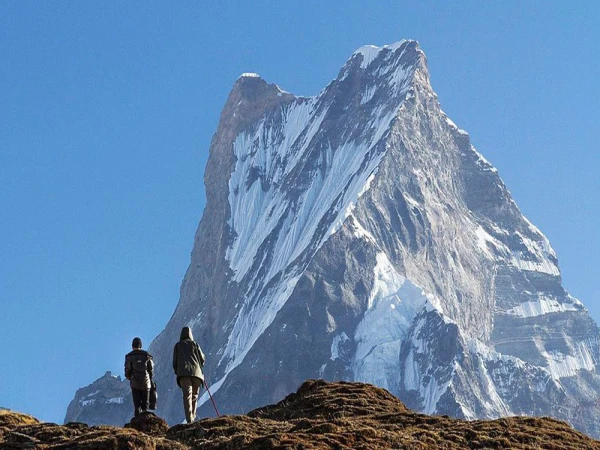Hiking and trekking are among the best and most popular outdoor activities. These recreational activities vary from group to group and involve a long or short walking distance. This is the perfect activity for those who are looking to enjoy a peaceful time in nature and maintain physical fitness at the same time. So, you should know the difference between these activities before planning your outdoor activity in nature with your friends and family.
What is Hiking?
Hiking is a softcore outdoor recreational activity generally covering a short distance in any natural environment, such as forests, mountains, or national parks. The walking distance for hiking depends on the location and the condition of the trail, usually completed within a day or sometimes beyond a day.
Hiking requires minimal preparation, or you can even leave for a hike spontaneously. This is one quick and short activity that you can do for a much-needed refreshment which is also beneficial for your mental and physical health at the same time.
Anyone can go for a hike! As a rule, hiking routes are well-marked and maintained for easy navigation and comfort for novice hikers. No heavy gear or prior experience is required for a quick hike near your locality. Usually, hikes are popular among those who are preparing for long trekking adventures to increase their physical endurance and stamina. While they are at it, they can explore beautiful, natural environments within a short amount of time.
Some hiking trails may include several uphill and downhill sections on the way, which might be challenging to some people, but with small and slow steps, anyone can successfully complete a hike. Some popular and rewarding hiking destinations in Nepal are:
Shivapuri National Park: This hike is 5-7 hours long, round trip with steady ascent. Mar–May & Sep–Nov are the best time for this hike with clear skies. Dec–Feb is also suitable for a crisp but chilly vibe. We suggest you avoid peak monsoon season, i.e., Jun–Aug. You should obtain a Park entry ticket which costs Nepali NPR 100 / SAARC NPR 600 / Foreigners NPR 1,000 per person. Local guide is optional, ~NPR 1,500–4,000 for the day.
Nagarjun National Park: This is a 4–6 hrs round-trip hike with steep but short duration. Mar–May & Sep–Nov are the best time for this activity. The entry fee is the same as above. Guided day packages commonly US$85–95 including permits/transport.
Phulchowki Hiking Trail: The hike starts from Godawar and lasts for 6–8 hrs round-trip on the highest hill around Kathmandu. Mar–May is the best time for rhododendrons views, and Sep–Nov is ideal for winter views. If you go via Godawari Botanical Garden, entrance fee is ~NPR 200. Guided day hikes typically cost US$70–100.
Chandragiri Hiking Trail: This hike takes you uphill to Bhaleshwor/Chandragiri Hills and lasts for 3–5 hrs going up and 2–3 hrs walking down. The hike is moderately challenging and strenuous. Sep–Nov & Mar–May are best for this hike with winter clear and cold weather. The trail requires no special permit. If you ride the cable car which is a popular way for going down or both ways. For Nepalese hikers it costs NPR 825 return / 495 one-way, SAARC NPR 1320 / 790, Foreigners US$23 / US$13 (official rates). Day-tour packages vary according to the itinerary.
Chisapani Nagarkot Hike: This hike takes you through Chisapani to Nagarkot and lasts for 2–3 days. Commonly 2–3 days with 5–7 hrs walking per day. Sep–Nov & Mar–May are the best time for this hike with winter cold nights. Shivapuri-Nagarjun NP entry at Sundarijal (NPR 100/600/1,000 as above). Nagarkot tourist fee is around NPR 339 for foreigners. 3-day guided packages often US$235–250 are also available including permits/transfers & basic stays.
Phumdikot Hike, Pokhara: The hike takes you through Peace Pagoda to Pumdikot Shiva statue and lasts for 4–6 hrs round-trip. This is an easy–moderate hike. It is a Year-round hike. Entry is generally free, small local fees/donations if possible is appreciated. Day-hike packages commonly US$50–120 depending on inclusions.
What is Trekking?
Trekking is a hardcore outdoor recreational activity or even a form of long-distance hiking that typically involves covering several kilometers over multiple walking days or weeks. Trekking includes walking through rugged and mountainous terrain with several uphills and downhills. This activity depends on various factors such as distance to be covered, duration of the entire trek, terrain, and topography of the destination.
While some treks may take 4 to 5 days, some treks last for weeks to complete depending on the length and difficulty of the trail. Trekking trails in popular destinations like Langtang Valley, Ghorepani Poon Hill, and Helambu are well-marked, well-defined, and easy to navigate. Whereas some treks require additional equipment, skills, or experience such as mountain climbing, crossing rivers, paths of the Rocky or steep terrain, snow-covered mountain passes, etc.
In other words, trekking is more than just walking and is a physically demanding activity that requires good physical fitness, endurance, and proper preparation for any possible conditions. During the trek, trekkers can stay in hotels, basic teahouses, or camping depending on the destination's trail. Usually, trekking at high altitude requires acclimatization stops to adapt the body to the change in the environment since the risk of high altitude sickness is higher in treks.
Gears are another essential part of the treks. Depending on the nature of the route, Trekkers require gear like sleeping bags, trekking poles, trekking boots, rain gear, etc., along with other gear. Trekking usually requires hiring a guide or a porter who can help lead the challenging trails. Some popular and rewarding treks in Nepal are:
Everest Base Camp trek- This popular trek typically lasts for 12-14 days. The standard price for this trek is $1,200-$1,900 or more for luxury options like helitour. October to November and March to May are the best seasons for the EBC trek.
Annapurna Base Camp trek- This popular trek typically lasts for 9-12 days. The cost for the trek is around $700 to $1,200. October to November and March to May are the best seasons to visit Annapurna Base Camp.
Ghorepani Poonhill Trek- The short trek lasts for 3-5 days for $350 to $600. Some go for a 6 to 8-day duration as well. This is the best year-round trek.
Annapurna Circuit Trek- This classic long trek lasts for 12 to 18 days. The best seasons to do this trek are Oct-Nov and Mar-May. Typically the cost for this trek is $900 to $1,500.
Manaslu Circuit Trek- This is another long trek that lasts for 13 to 16 days or even 12-21 in some cases. The best season for this trek is Oct-Nov and Mar-May. It also costs around $900 to $1,500.
Mardi Himal Trek- This rewarding trek lasts for 4 to 7 days and costs around $400 to $900. The best season to visit Mardi Himal is Oct-Nov and Mar-May.
Langtang Valley Trek- This popular trek is 7 to 10 days long. The cost for this trek is around $400 to $900, depending on the transport medium and permits. October to November and March to May are the best seasons to visit Langtang Valley.
What is the difference between hiking and trekking?
| S.N. | Basis | Trekking | Hiking |
| 1 | Purpose | Adventure and exploration, trekking has a destination that often arises from personal interests. |
Leisure, Recreation, Exercise, both trekking and hiking are done for fun and pleasure. |
| 2 | Terrain | Rough, remote, and challenging, it consists of dirt roads, unmanaged trails, or sometimes the absence of trails into the wilderness | Marked trails. Takes place on established routes that are often well-managed. |
| 3 | Distnace |
Involves long-distance walking, sometimes passing over 50 km |
Covers shorter distances ranging from 4 km to 50 km. |
| 4 | Duration |
Last for several days until reaching the destination |
A few hours or can be completed in a day. |
| 5 | Preparation |
Needs prior preparations, a larger backpack, and a detailed and extensive plan. Porters and guides are necessary. |
Fewer things to pack, lasts at most overnight, minimal planning. No need for extra help, i.e., porters or guides. |
| 6 | Gears Required |
Requires specialized gear such as sturdy boots, a sleeping bag, trekking boots, a backpack, camping equipment, etc |
Minimal gear, lightweight shoes, water, snacks, a day pack, etc |
| 7 | Difficulty/Risks |
Trails include exotic places and unmanaged routes which come with greater risks. Insurance certificates are required when trekking in challenging regions. |
Well-kept trails, usually hiking, are local. Minimal risk, easy or moderately challenging. |
| 8 | Physical demand | Physically demanding, requires a good level of fitness. | Requires a moderate level of fitness, a more relaxed pace of activity |
| 9 | Cost | Expensive | Cheap and affordable |
| 10 | Accommodation | Tea House, local hotels, homestay, or camping | No overnight stay, sometimes tea houses |
Beginner's Guide for Planning Trekking or Hiking
No matter if you're experienced or a novice, a few things should always be taken into consideration when choosing between trekking and hiking. Here's a list of things that you need to take care of before planning a hike or a trek.
Destination/trail check: First, you should list down the trails you plan to trek or hike considering your fitness level, budget, skill, and preference.
Weather check: For hiking, check the weather forecast in the specific hiking area. For trekking, check the weather conditions in the trekking region on your scheduled date for the trek. However, for a long-duration trek, the weather forecast is not always reliable.
Packlist check: For hiking, light packing is enough. Consider bringing water, snacks, a map or GPS, a first aid kit, and feel essential items like sunscreen, whistle, insect repellent, etc.
For trekking, pack extensively, a couple of pairs of clothes, socks, thermals, gloves, and gear like a head lamp, flashlight, trekking pole, etc. Light packing is always recommended and we suggest you pack only essentials for the trek.
Update check: Always consider letting your near ones know about your whereabouts, ( i.e., destination, its trails, duration to complete, etc). So that if you ever get lost or have an emergency you will have someone to rely on for help. It's best if you contact your dear ones at least once a day during the journey. Most of the trekking region has internet and Wi-Fi facilities.
Regulations check: Most of the trekking and hiking routes go through restricted areas like National Parks. So, make sure you have your necessary permits and permission to perform hiking and trekking activities in the region legally.
Fit check: A comfortable and secure wear is essential for a smooth hiking or trekking journey. So, to take care of your body during the activity, you must dress accordingly. Consider wearing beat-in boots, rain gear, and for high-altitude trekking, use crampons, down jackets, and other clothing essentials.
Responsibility check: Both of these activities take place in a natural environment where you can connect to your roots. So, we should prioritize responsible tourism and try not to disturb the sanctity of the environment for future visitors. We should be responsible for our waste and dispose of it in its respective places. “Leave nothing but footsteps, take nothing but photographs.”
Final Thoughts,
Whether you choose trekking or hiking, you are bound to have an incredible experience in the natural environment. While they may differ in many aspects, both of these activities have their own importance and beauty.
Treks are long journeys, which are costlier, physically demanding, require proper preparations, riskier, etc. Likewise, hikes are more budget-friendly, less demanding, and take a shorter duration. So, you can choose which fits your narrative and circumstances best. Hiking and trekking are the best ways to stay physically and mentally fit and explore nature at the same time. These activities will help you connect with your inner self in a peaceful environment.
Nepal offers multiple opportunities for those looking for hiking and trekking activities, with some of the most famous trekking trails such as the Mount Everest base camp trek, the Annapurna circuit trek, the Langtang valley trek, etc.
Are you looking to plan for your next hike or trek?
Did you find the right destination for you?
Let us help you arrange your exciting activities in Nepal effortlessly!! Visit our page, contact us on www.ammoniteadventure.com, and explore exciting trekking packages to choose the perfect one for you.
Happy Travels!!















